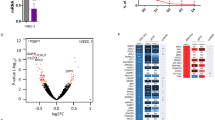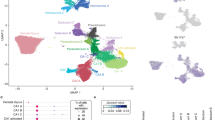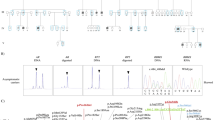Abstract
Alpha-thalassemia X-linked intellectual disability (ATR-X) syndrome is caused by mutations in ATRX, which encodes a chromatin-remodeling protein. Genome-wide analyses in mouse and human cells indicate that ATRX tends to bind to G-rich sequences with a high potential to form G-quadruplexes. Here, we report that Atrx mutation induces aberrant upregulation of Xlr3b expression in the mouse brain, an outcome associated with neuronal pathogenesis displayed by ATR-X model mice. We show that ATRX normally binds to G-quadruplexes in CpG islands of the imprinted Xlr3b gene, regulating its expression by recruiting DNA methyltransferases. Xlr3b binds to dendritic mRNAs, and its overexpression inhibits dendritic transport of the mRNA encoding CaMKII-α, promoting synaptic dysfunction. Notably, treatment with 5-ALA, which is converted into G-quadruplex-binding metabolites, reduces RNA polymerase II recruitment and represses Xlr3b transcription in ATR-X model mice. 5-ALA treatment also rescues decreased synaptic plasticity and cognitive deficits seen in ATR-X model mice. Our findings suggest a potential therapeutic strategy to target G-quadruplexes and decrease cognitive impairment associated with ATR-X syndrome.
This is a preview of subscription content, access via your institution
Access options
Access Nature and 54 other Nature Portfolio journals
Get Nature+, our best-value online-access subscription
$29.99 / 30 days
cancel any time
Subscribe to this journal
Receive 12 print issues and online access
$209.00 per year
only $17.42 per issue
Buy this article
- Purchase on Springer Link
- Instant access to full article PDF
Prices may be subject to local taxes which are calculated during checkout





Similar content being viewed by others
References
Gibbons, R. J., Suthers, G. K., Wilkie, A. O., Buckle, V. J. & Higgs, D. R. X-linked alpha-thalassemia/mental retardation (ATR-X) syndrome: localization to Xq12–q21.31 by X inactivation and linkage analysis. Am. J. Hum. Genet. 51, 1136–1149 (1992).
Gibbons, R. J., Picketts, D. J., Villard, L. & Higgs, D. R. Mutations in a putative global transcriptional regulator cause X-linked mental retardation with alpha-thalassemia (ATR-X syndrome). Cell 80, 837–845 (1995).
Gibbons, R. J. et al. Mutations in the chromatin-associated protein ATRX. Hum. Mutat. 29, 796–802 (2008).
Argentaro, A. et al. Structural consequences of disease-causing mutations in the ATRX–DNMT3–DNMT3L (ADD) domain of the chromatin-associated protein ATRX. Proc. Natl Acad. Sci. USA 104, 11939–11944 (2007).
Dhayalan, A. et al. The ATRX–ADD domain binds to H3 tail peptides and reads the combined methylation state of K4 and K9. Hum. Mol. Genet. 20, 2195–2203 (2011).
Iwase, S. et al. ATRX ADD domain links an atypical histone methylation recognition mechanism to human mental-retardation syndrome. Nat. Struct. Mol. Biol. 18, 769–776 (2011).
Picketts, D. J. et al. ATRX encodes a novel member of the SNF2 family of proteins: mutations point a common mechanism underlying the ATR-X syndrome. Hum. Mol. Genet. 5, 1899–1907 (1996).
Mitson, M., Kelley, L. A., Sternberg, M. J., Higgs, D. R. & Gibbons, R. J. Functional significance of mutations in the Snf2 domain of ATRX. Hum. Mol. Genet. 20, 2603–2610 (2011).
Law, M. J. et al. ATR-X syndrome protein targets tandem repeats and influences allele-specific expression in a size-dependent manner. Cell 143, 367–378 (2010).
Drané, P., Ouararhni, K., Depaux, A., Shuaib, M. & Hamiche, A. The death-associated protein DAXX is a novel histone chaperone involved in the replication-independent deposition of H3.3. Genes Dev. 24, 1253–1265 (2010).
Goldberg, A. D. et al. Distinct factors control histone variant H3.3 localization at specific genomic regions. Cell 140, 678–691 (2010).
Lewis, P. W., Elsaesser, S. J., Noh, K. M., Stadler, S. C. & Allis, C. D. Daxx is an H3.3-specific histone chaperone and cooperates with ATRX in replication-independent chromatin assembly at telomeres. Proc. Natl Acad. Sci. USA 107, 14075–14080 (2010).
Voon, H. P. et al. ATRX plays a key role in maintaining silencing at interstitial heterochromatic loci and imprinted genes. Cell Rep. 11, 405–418 (2015).
Kernohan, K. D. et al. ATRX partners with cohesin and MeCP2 and contributes to developmental silencing of imprinted genes in the brain. Dev. Cell 18, 191–202 (2010).
Kernohan, K. D., Vernimmen, D., Gloor, G. B. & Bérubé, N. G. Analysis of neonatal brain lacking ATRX or MeCP2 reveals changes in nucleosome density, CTCF binding and chromatin looping. Nucleic Acids Res. 42, 8356–8368 (2014).
Levy, M. A., Kernohan, K. D., Jiang, Y. & Bérubé, N. G. ATRX promotes gene expression by facilitating transcriptional elongation through guanine-rich coding regions. Hum. Mol. Genet. 24, 1824–1835 (2015).
Butler, M. G. Genomic imprinting disorders in humans: a mini-review. J. Assist. Reprod. Genet. 26, 477–486 (2009).
Shioda, N. et al. Aberrant calcium/calmodulin-dependent protein kinase II (CaMKII) activity is associated with abnormal dendritic spine morphology in the ATRX mutant mouse brain. J. Neurosci. 31, 346–358 (2011).
Nogami, T. et al. Reduced expression of the ATRX gene, a chromatin-remodeling factor, causes hippocampal dysfunction in mice. Hippocampus 21, 678–687 (2011).
Howard, M. T. et al. Attenuation of an amino-terminal premature stop codon mutation in the ATRX gene by an alternative mode of translational initiation. J. Med. Genet. 41, 951–956 (2004).
Abidi, F. E. Mutation in the 5′ alternatively spliced region of the XNP/ATR-X gene causes Chudley–Lowry syndrome. Eur. J. Hum. Genet. 13, 176–183 (2005).
Bergsagel, P. L., Timblin, C. R., Kozak, C. A. & Kuehl, W. M. Sequence and expression of murine cDNAs encoding Xlr3a and Xlr3b, defining a new X-linked lymphocyte-regulated Xlr gene subfamily. Gene 150, 345–350 (1994).
Raefski, A. S. & O’Neill, M. J. Identification of a cluster of X-linked imprinted genes in mice. Nat. Genet. 37, 620–624 (2005).
Davies, W. et al. Xlr3b is a new imprinted candidate for X-linked parent-of-origin effects on cognitive function in mice. Nat. Genet. 37, 625–629 (2005).
Moore, L. D., Le, T. & Fan, G. DNA methylation and its basic function. Neuropsychopharmacology 38, 23–38 (2013).
Hutnick, L. K. et al. DNA hypomethylation restricted to the murine forebrain induces cortical degeneration and impairs postnatal neuronal maturation. Hum. Mol. Genet. 18, 2875–2888 (2009).
Feng, J. et al. Dnmt1 and Dnmt3a maintain DNA methylation and regulate synaptic function in adult forebrain neurons. Nat. Neurosci. 13, 423–430 (2010).
Gibbons, R. J. et al. Mutations in ATRX, encoding a SWI/SNF-like protein, cause diverse changes in the pattern of DNA methylation. Nat. Genet. 24, 368–371 (2000).
Buchan, J. R. & Parker, R. Eukaryotic stress granules: the ins and outs of translation. Mol. Cell 36, 932–941 (2009).
Glickman, M. H. & Ciechanover, A. The ubiquitin–proteasome proteolytic pathway: destruction for the sake of construction. Physiol. Rev. 82, 373–428 (2002).
Martinez-Garay, I. et al. A new gene family (FAM9) of low-copy repeats in Xp22.3 expressed exclusively in testis: implications for recombinations in this region. Genomics 80, 259–267 (2002).
Hirokawa, N. & Takemura, R. Molecular motors and mechanisms of directional transport in neurons. Nat. Rev. Neurosci. 6, 201–214 (2005).
Bramham, C. R. & Wells, D. G. Dendritic mRNA: transport, translation and function. Nat. Rev. Neurosci. 8, 776–789 (2007).
Rook, M. S., Lu, M. & Kosik, K. S. CaMKIIα 3′ untranslated region-directed mRNA translocation in living neurons: visualization by GFP linkage. J. Neurosci. 20, 6385–6393 (2000).
Bliss, T. V. & Collingridge, G. L. A synaptic model of memory: long-term potentiation in the hippocampus. Nature 361, 31–39 (1993).
Fukunaga, K., Muller, D. & Miyamoto, E. Increased phosphorylation of Ca2+/calmodulin-dependent protein kinase II and its endogenous substrates in the induction of long-term potentiation. J. Biol. Chem. 270, 6119–6124 (1995).
Scheetz, A. J., Nairn, A. C. & Constantine-Paton, M. NMDA receptor-mediated control of protein synthesis at developing synapses. Nat. Neurosci. 3, 211–216 (2000).
Miller, S. et al. Disruption of dendritic translation of CaMKIIα impairs stabilization of synaptic plasticity and memory consolidation. Neuron 36, 507–519 (2002).
Fukunaga, K., Stoppini, L., Miyamoto, E. & Muller, D. Long-term potentiation is associated with an increased activity of Ca2+/calmodulin-dependent protein kinase II. J. Biol. Chem. 268, 7863–7867 (1993).
Ouyang, Y., Kantor, D., Harris, K. M., Schuman, E. M. & Kennedy, M. B. Visualization of the distribution of autophosphorylated calcium/calmodulin-dependent protein kinase II after tetanic stimulation in the CA1 area of the hippocampus. J. Neurosci. 17, 5416–5427 (1997).
Balasubramanian, S., Hurley, L. H. & Neidle, S. Targeting G-quadruplexes in gene promoters: a novel anticancer strategy? Nat. Rev. Drug Discov. 10, 261–275 (2011).
Peng, Q. et al. 5-Aminolevulinic acid-based photodynamic therapy. Clinical research and future challenges. Cancer 79, 2282–2308 (1997).
Qin, Y. & Hurley, L. H. Structures, folding patterns, and functions of intramolecular DNA G-quadruplexes found in eukaryotic promoter regions. Biochimie 90, 1149–1171 (2008).
Bochman, M. L., Paeschke, K. & Zakian, V. A. DNA secondary structures: stability and function of G-quadruplex structures. Nat. Rev. Genet. 13, 770–780 (2012).
Kikin, O., Zappala, Z., D’Antonio, L. & Bagga, P. S. GRSDB2 and GRS_UTRdb: databases of quadruplex forming G-rich sequences in pre-mRNAs and mRNAs. Nucleic Acids Res. 36, D141–D148 (2008).
Gibbons, R. Alpha thalassaemia-mental retardation, X linked. Orphanet J. Rare Dis. 1, 15 (2006).
Villanueva, A. & Jori, G. Pharmacokinetic and tumour-photosensitizing properties of the cationic porphyrin meso-tetra(4N-methylpyridyl)porphine. Cancer Lett. 73, 59–64 (1993).
Dalton, J. T. et al. Clinical pharmacokinetics of 5-aminolevulinic acid in healthy volunteers and patients at high risk for recurrent bladder cancer. J. Pharmacol. Exp. Ther. 301, 507–512 (2002).
Perotti, C., Casas, A., Fukuda, H., Sacca, P. & Batlle, A. ALA and ALA hexyl ester induction of porphyrins after their systemic administration to tumour bearing mice. Br. J. Cancer 87, 790–795 (2002).
Skalska, L., Beltran-Nebot, M., Ule, J. & Jenner, R. G. Regulatory feedback from nascent RNA to chromatin and transcription. Nat. Rev. Mol. Cell Biol. 18, 331–337 (2017).
Clynes, D. & Gibbons, R. J. ATRX and the replication of structured DNA. Curr. Opin. Genet. Dev. 23, 289–294 (2013).
Li, Y. et al. Effect of ATRX and G-quadruplex formation by the VNTR sequence on α-globin gene expression. ChemBiochem 17, 928–935 (2016).
Roberts, D. W. et al. Glioblastoma multiforme treatment with clinical trials for surgical resection (aminolevulinic acid). Neurosurg. Clin. N. Am. 23, 371–377 (2012).
Stummer, W. et al. Intraoperative detection of malignant gliomas by 5-aminolevulinic acid-induced porphyrin fluorescence. Neurosurgery 42, 518–526 (1998).
Al-Saber, F. et al. The safety and tolerability of 5-aminolevulinic acid phosphate with sodium ferrous citrate in patients with type 2 diabetes mellitus in Bahrain. J. Diabetes Res. 2016, 8294805 (2016).
Shioda, N. et al. Endocytosis following dopamine D2 receptor activation is critical for neuronal activity and dendritic spine formation via Rabex-5/PDGFRβ signaling in striatopallidal medium spiny neurons. Mol. Psychiatry 22, 1205–1222 (2017).
Spencer, C. M., Alekseyenko, O., Serysheva, E., Yuva-Paylor, L. A. & Paylor, R. Altered anxiety-related and social behaviors in the Fmr1 knockout mouse model of fragile X syndrome. Genes Brain Behav. 4, 420–430 (2005).
Acknowledgements
We thank I. Kitajima for kindly providing AtrxΔE2 mice, deposited in the RIKEN BioResource Center (RBRC04937), H. Shimbo for kindly assisting in cell culture, D. Picketts for kindly providing the Atrx cDNA (pEGFP-C2-ATRX-HA) plasmid, N. Berube for kindly providing the ATRX shRNA (pSUPER-shATRX1) plasmid and K. Kosik for kindly providing the GFP-MS2-nls and MS2-binding site–CaMKII-α 3′ UTR plasmids. This research was supported by the Practical Research Project for Rare/Intractable Diseases from the Japan Agency for Medical Research and Development (AMED; N.S., K.K., H.T., N.O., H.S., K.F. and T.W.). This work was also supported by MEXT/JSPS KAKENHI (grant numbers 16K08265 and 25110705) to N.S.
Author information
Authors and Affiliations
Contributions
N.S., Y.Y., K.Y., M.O. and Y.L. performed the experiments. K.K., H.T., N.O., T.E., H.S. and T.W. provided critical advice. N.S. and K.F. wrote the manuscript and designed the study. All authors discussed the results and commented on the manuscript.
Corresponding authors
Ethics declarations
Competing interests
The authors declare no competing interests.
Additional information
Publisher’s note: Springer Nature remains neutral with regard to jurisdictional claims in published maps and institutional affiliations.
Supplementary information
Supplementary Text and Figures
Supplementary Figures 1–13 and Supplementary Tables 1–5
Supplementary Video 1
Time-lapse imaging of GFP-MS2-labeled CaMKIIα mRNA (GFP-CaMKIIα 3′ UTR) in a proximal dendrite of a cultured WT neuron
Supplementary Video 2
Time-lapse imaging of GFP-MS2-labeled CaMKIIα mRNA (GFP-CaMKIIα 3′ UTR) in a distal dendrite of a cultured WT neuron
Rights and permissions
About this article
Cite this article
Shioda, N., Yabuki, Y., Yamaguchi, K. et al. Targeting G-quadruplex DNA as cognitive function therapy for ATR-X syndrome. Nat Med 24, 802–813 (2018). https://doi.org/10.1038/s41591-018-0018-6
Received:
Accepted:
Published:
Issue Date:
DOI: https://doi.org/10.1038/s41591-018-0018-6
This article is cited by
-
A mouse model of ATRX deficiency with cognitive deficits and autistic traits
Journal of Neurodevelopmental Disorders (2023)
-
Bioactive nutraceuticals as G4 stabilizers: potential cancer prevention and therapy—a critical review
Naunyn-Schmiedeberg's Archives of Pharmacology (2023)
-
New heritable ATRX mutation identified by whole exome sequencing and review
Egyptian Journal of Medical Human Genetics (2022)
-
5-Aminolevulinic acid antiviral efficacy against SARS-CoV-2 omicron variant in vitro
Tropical Medicine and Health (2022)
-
Antiviral activity of 5-aminolevulinic acid against variants of severe acute respiratory syndrome coronavirus 2
Tropical Medicine and Health (2022)



